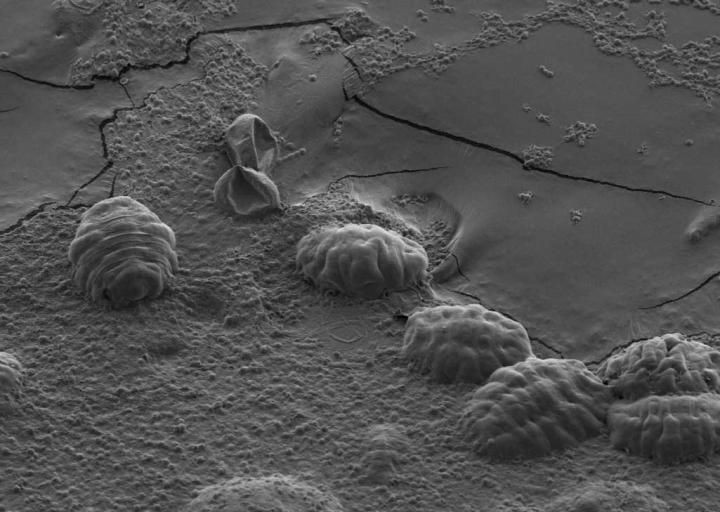Tardigrade Proteins Help ‘Water Bears’ Survive Extreme Dehydration

Don’t let a tardigrade’s size fool you: they may be only 0.05 inches at most, but they are the most resilient life form known to humans. Despite being aquatic, they can live for over 30 years without water or even food; they have been known to survive through temperatures well above 200 degrees Fahrenheit and close to absolute zero (minus 460 degrees Fahrenheit); they can withstand high pressure, strong radiation and even the vacuum of outer space.
But how do these eight-legged creatures, also called water bears (though they have nothing to do with bears), survive in these bizarre extremes? Since being identified about 250 years ago, they have been examined a lot, and one of their survival skills has been found to be the ability to survive desiccation, or extreme drying of their bodies.
A paper published Thursday in the journal Molecular Cell tries to explain that ability. Previously thought to be a result of a sugar called trehelose, the paper, titled “Tardigrades Use Intrinsically Disordered Proteins to Survive Desiccation,” says the desiccation survival is attributable to proteins instead.
Read: Tardigrade Protein Could Prevent Radiation Damage To Human DNA
Gene sequencing of tardigrades revealed they had very low levels of trehelose, or even none at all.
“The question has been, ‘If tardigrades aren’t relying on trehelose to survive desiccation, what do they use instead?’” Thomas Boothby, a postdoctoral fellow at the University of North Carolina, Chapel Hill, and the study's first author, said in a statement, citing that as the reason why his team set out on its research.
The scientists first looked at the various genes that were active in tardigrades under different conditions: unstressed, drying out and frozen. Through this method, they identified the specific genes that are expressed at high levels in the drying out phase, and the proteins those genes encode. These proteins are from a class called intrinsically disordered proteins (IDP), which unlike other proteins don’t have a fixed 3D structure.
The IDPs found in tardigrades have been named tardigrade-specific intrinsically disordered proteins (TDP) and they were found in another species that also survives drying out. Researchers also found that adding genes that encode TDPs into yeast and bacteria protected those organisms from the effects of desiccation.
“The big takeaway from our study is that tardigrades have evolved unique genes that allow them to survive drying out,” Boothby said in the statement, adding that the study could have implications for crop protection and even medical storage. “Being able to stabilize sensitive pharmaceuticals in a dry state is very important to me personally. I grew up in Africa, where lack of refrigeration in remote areas is a huge problem. These real-world applications are one of the things that led me to study tardigrades.”
© Copyright IBTimes 2024. All rights reserved.





















